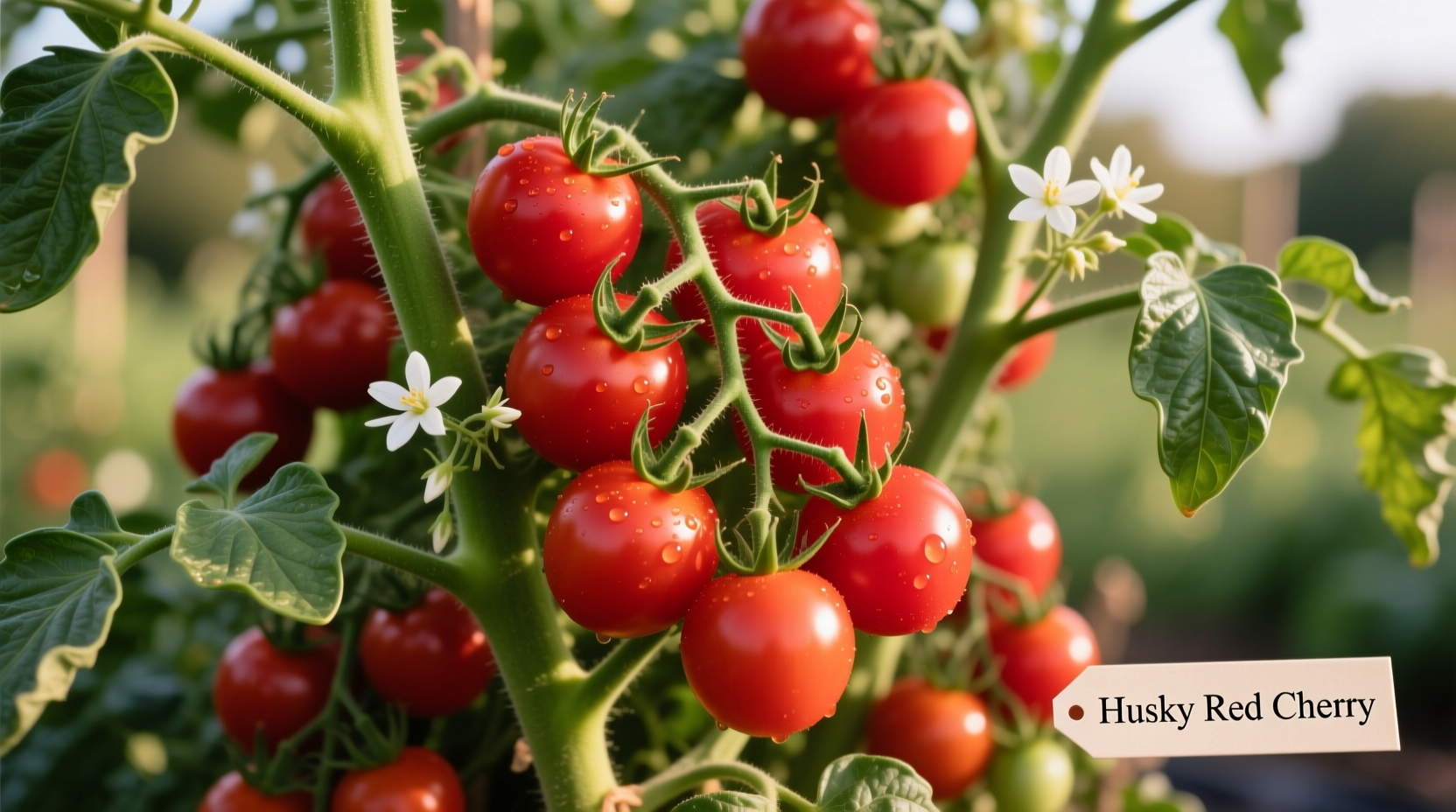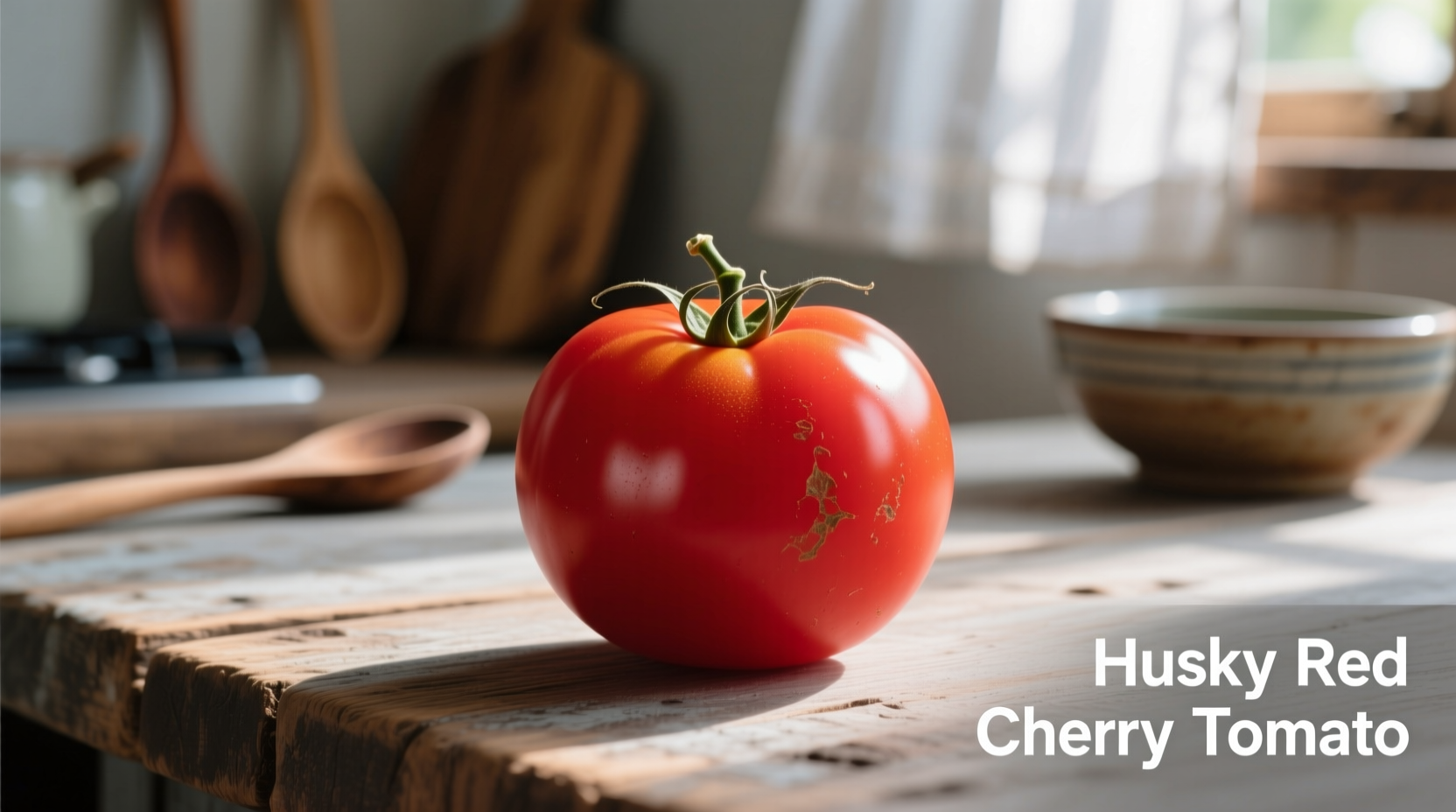Why Gardeners Choose Husky Red Cherry Tomatoes
When space is limited but flavor matters, Husky Red Cherry Tomatoes solve the container gardening dilemma. Developed through the University of New Hampshire's breeding program, this variety combines the sweetness of heirloom cherry tomatoes with the disease resistance and productivity of modern hybrids. Unlike sprawling indeterminate varieties that require extensive staking, Husky Red's compact 3-4 foot height makes it perfect for patios, balconies, and raised beds without sacrificing yield.

Essential Growing Requirements
Success with Husky Red begins with understanding its specific needs. These tomatoes thrive in full sun (6-8 hours daily) with consistent moisture and well-draining soil. Start seeds indoors 6-8 weeks before your last frost date, maintaining soil temperature between 70-80°F for optimal germination. When transplanting outdoors, space plants 24-36 inches apart to ensure proper air circulation—a critical factor in preventing fungal diseases.
| Growing Factor | Optimal Condition | Consequence of Deviation |
|---|---|---|
| Soil pH | 6.2-6.8 | Nutrient deficiencies below 6.0; reduced iron uptake above 7.0 |
| Water Consistency | 1-1.5 inches weekly | Cracking with irregular watering; blossom end rot with drought |
| Fertilizer Schedule | Balanced formula every 2-3 weeks | Excess nitrogen causes leafy growth with few fruits |
Harvesting for Maximum Flavor
Timing your harvest correctly transforms good tomatoes into exceptional ones. Husky Red tomatoes reach peak sweetness when harvested at the 'breaker stage'—when they've developed 50-75% of their final color but still feel firm. Complete ripening off the vine preserves texture while developing full flavor. For the sweetest tomatoes, pick in the morning after dew has dried but before afternoon heat. Store harvested tomatoes at room temperature away from direct sunlight; refrigeration destroys flavor compounds.
Proven Disease Resistance Profile
One of Husky Red's most valuable traits is its documented resistance to common tomato pathogens. According to the University of New Hampshire Cooperative Extension, this variety demonstrates:
- Fusarium wilt (races 1 & 2) resistance
- Tobacco mosaic virus resistance
- Moderate resistance to verticillium wilt
This resistance profile significantly reduces the need for chemical interventions compared to heirloom varieties. However, proper crop rotation (avoiding planting tomatoes in the same spot for 3+ years) remains essential for long-term garden health.
Culinary Applications That Shine
Husky Red's balanced sweetness (Brix level of 7-8) and thin skin make them exceptionally versatile. Unlike some cherry tomatoes with tough skins, these perform beautifully in both raw and cooked applications. Try them:
- Halved in salads where their consistent size creates visual appeal
- Roasted at 300°F for 45 minutes to concentrate flavors for pasta sauces
- Skewered with mozzarella and basil for quick caprese appetizers
- Preserved whole in olive oil with garlic and herbs
How Husky Red Compares to Other Cherry Tomatoes
Understanding how Husky Red differs from similar varieties helps gardeners make informed choices. While popular varieties like Sungold offer higher sweetness, they lack disease resistance and require more space. The chart below shows key differences:
| Variety | Plant Type | Disease Resistance | Flavor Profile | Best For |
|---|---|---|---|---|
| Husky Red | Determinate (3-4 ft) | Fusarium, TMV, Verticillium | Balanced sweet-tart (7-8 Brix) | Containers, small spaces |
| Sungold | Indeterminate (6+ ft) | None | Very sweet (9-10 Brix) | Flavor-focused gardens |
| Black Cherry | Indeterminate (8+ ft) | Limited | Complex, smoky (6-7 Brix) | Heirloom enthusiasts |
Troubleshooting Common Growing Issues
Even with its disease resistance, Husky Red can encounter problems. Address these common issues promptly:
- Blossom end rot: Caused by calcium deficiency often triggered by irregular watering. Maintain consistent moisture and apply calcium spray at first sign.
- Cracking: Results from sudden water uptake after dry periods. Mulch heavily and water consistently.
- Yellowing leaves: Often indicates nitrogen deficiency. Apply balanced organic fertilizer every 3 weeks during fruiting.
Season Extension Techniques
Maximize your Husky Red harvest with these professional techniques:
- Use black plastic mulch to warm soil 10-14 days before transplanting
- Install floating row covers during early season to protect from cool temperatures
- Apply potassium-rich fertilizer (like tomato-tone) when first flowers appear
- Remove lower leaves touching soil to prevent soil-borne disease transmission











 浙公网安备
33010002000092号
浙公网安备
33010002000092号 浙B2-20120091-4
浙B2-20120091-4